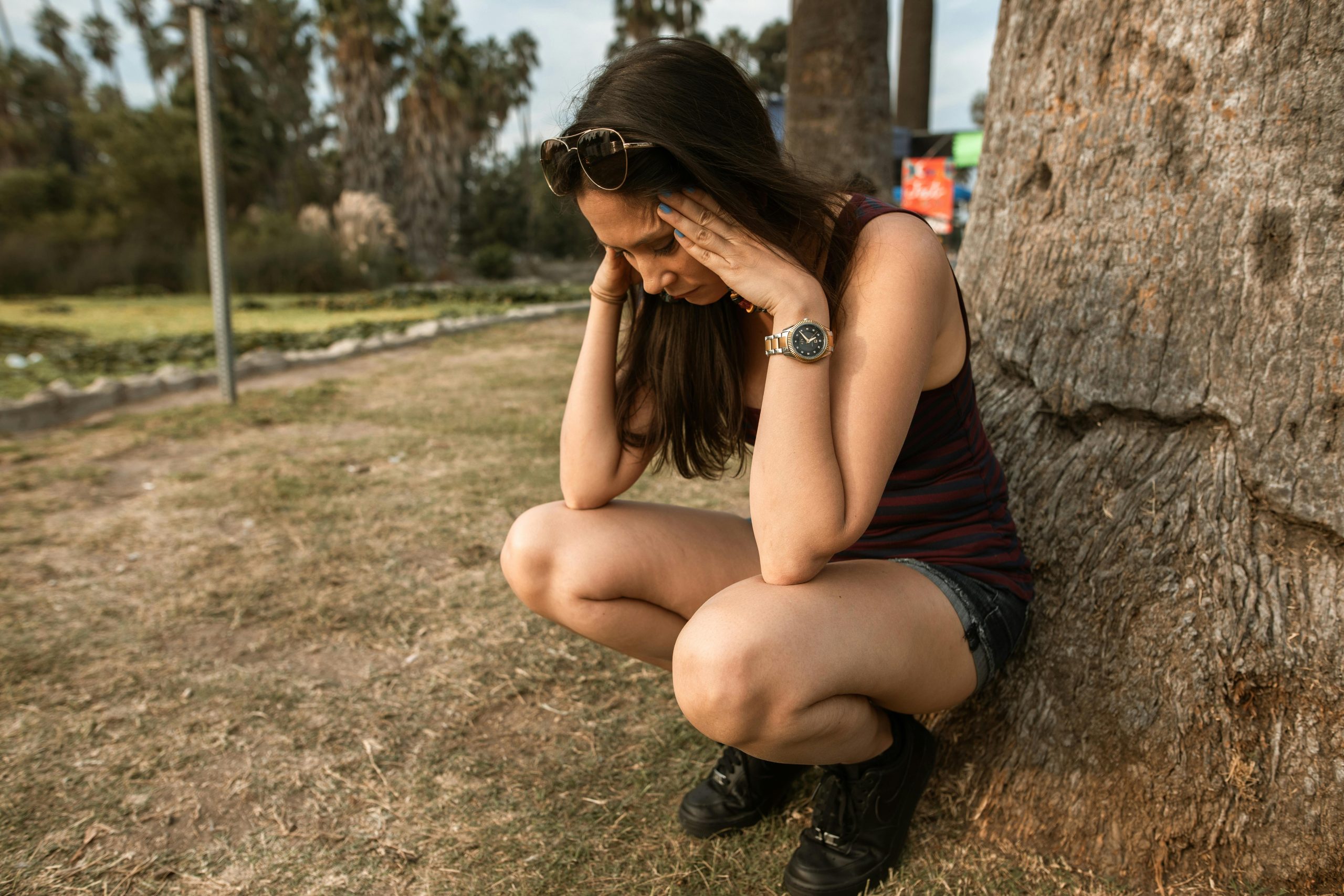Understanding and Overcoming Reactive Depression
Reactive depression, also known as situational depression, is not just “feeling down.” It’s a mental health condition triggered by specific life events, like the loss of a loved one, job stress, or other challenges. Many people dismiss it as temporary sadness, but that’s a dangerous oversimplification. Reactive depression is deeply tied to our emotions and how we process major life changes.
The term itself holds a clue: it’s “reactive.” This means the condition arises as a direct response to something significant. The focus buzz word here, reactive depression, captures the relationship between our external environment and internal emotional health. If left untreated, it can severely affect relationships, productivity, and quality of life.
Let’s explore what makes this condition unique, how it impacts people differently, and what we can do to address it.
Understanding Reactive Depression in Depth
Reactive depression differs from clinical depression in that it is event-specific. While clinical depression may stem from genetic or biochemical factors, reactive depression is linked to identifiable life triggers.
The Science of Emotional Triggers
Every emotional experience starts in the brain. When faced with a traumatic event, the amygdala—our emotional processing center—sends out distress signals. For most people, the prefrontal cortex helps regulate these feelings and enables problem-solving. However, for individuals prone to reactive depression, this balance breaks. Stress hormones, like cortisol, flood the system, prolonging feelings of despair.
A key difference between reactive depression and general sadness is the duration and intensity of symptoms. While sadness fades, reactive depression lingers, often for weeks or months.
Why It’s Harder Than You Think
Many assume that time heals all wounds, but this isn’t always true for those dealing with reactive depression. Society often trivializes emotional struggles, urging people to “move on.” This stigma leads to emotional isolation and a reluctance to seek help.
Here’s a common scenario:
Imagine someone losing their job unexpectedly after years of dedication. They might experience:
- A sharp drop in self-esteem.
- Persistent worry about finances and family expectations.
- Guilt for “not doing enough.”
- Sleep issues and fatigue from overthinking.
It’s easy to see how one life event spirals into a full-blown mental health crisis. This is reactive depression in action—a complex interplay of thoughts, feelings, and external pressures.
How Reactive Depression Impacts Daily Life
Emotional Effects
People often feel trapped in a cycle of hopelessness. This might manifest as:
- Constant guilt or self-blame.
- Lack of interest in activities they once enjoyed.
- A heightened sensitivity to criticism.
Physical Effects
Reactive depression doesn’t just stay in the mind; it can show up in the body too. Common symptoms include:
- Digestive issues due to prolonged stress.
- Headaches from constant tension.
- Unexplained body aches, reflecting emotional strain.
Social Impacts
Many people with reactive depression withdraw from loved ones. They avoid social gatherings, fearing judgment or the burden of explaining themselves. Relationships can suffer, leading to feelings of loneliness and abandonment.
Proven Strategies That Work
While reactive depression is challenging, it is treatable. The key lies in understanding that healing requires both emotional and practical solutions.
1. Cognitive Behavioral Therapy (CBT)
CBT is one of the most effective treatments for reactive depression. It helps individuals identify and challenge harmful thought patterns. For example:
- Instead of thinking, “I failed, so I’m worthless,” CBT teaches, “I failed, but I can learn and improve.”
2. Lifestyle Changes: Small Steps, Big Impact
Physical activity, even a 20-minute walk daily, can boost mood by releasing endorphins. Similarly, eating a balanced diet rich in omega-3 fatty acids and whole grains supports brain health.
For example, someone struggling with post-divorce reactive depression could create a structured routine involving exercise, meal planning, and journaling their thoughts. These small steps can rebuild confidence over time.
3. The Healing Power of Community
Talking to someone who listens—whether a friend, family member, or therapist—can make a world of difference. Sharing your feelings validates your experiences and reduces emotional burdens.
Community support groups, either in-person or online, offer a safe space to connect with others facing similar struggles. These groups help individuals realize they are not alone.
Reactive Depression and Society
Workplace Culture and Mental Health
Reactive depression is often triggered by professional setbacks. Toxic work environments, for instance, can create lasting emotional damage. Employers must foster open dialogues about mental health, offering resources like Employee Assistance Programs (EAPs).
Cultural Stigma: Changing the Narrative
In many cultures, admitting to reactive depression is seen as a sign of weakness. This mindset prevents people from seeking timely help. By normalizing mental health conversations, we can encourage more proactive approaches to emotional well-being.
Why It Matters
Reactive depression doesn’t just affect individuals; it impacts families, workplaces, and communities. Addressing this condition head-on means fostering environments where people feel safe discussing their struggles.
Analogy: Treating the Roots, Not Just the Leaves
Imagine a tree with wilting leaves. Simply watering it won’t help if the roots are damaged. Similarly, reactive depression requires addressing its root cause—the life event that triggered it. Only by nurturing these roots can lasting healing occur.
Reactive Depression vs. Resilience
Reactive depression challenges us to rethink resilience. While resilience is often viewed as bouncing back quickly, true resilience involves acknowledging pain, processing it, and moving forward.
Practical Tips to Build Resilience
- Mindfulness Practices: Techniques like deep breathing and meditation help calm an overactive mind.
- Gratitude Journaling: Writing down things you’re thankful for shifts focus from negativity to positivity.
- Setting Boundaries: Learning to say “no” prevents burnout and protects emotional energy.
Taking the First Step Toward Healing
Reactive depression is not a life sentence. With the right tools, support, and mindset, individuals can overcome it and emerge stronger. If you or someone you know is struggling, remember: seeking help is a sign of courage, not weakness.
By understanding reactive depression and actively addressing it, we can foster a culture of empathy and resilience. Let’s take action—starting today.
FAQs
1. How Is Reactive Depression Diagnosed?
Reactive depression is typically diagnosed by a mental health professional through a combination of clinical interviews, symptom assessments, and discussions about recent life events. Unlike clinical depression, the symptoms are closely tied to a specific trigger, such as job loss, trauma, or relationship issues. It’s important to share as much detail as possible about your emotional and physical symptoms during the consultation.
2. Can Reactive Depression Lead to Chronic Depression If Left Untreated?
Yes, untreated reactive depression can develop into chronic depression or major depressive disorder in some cases. Prolonged stress and emotional distress can alter brain chemistry, making it harder to recover over time. Early intervention, including therapy and lifestyle changes, is critical to prevent long-term mental health complications.
3. Are Medications Effective for Treating Reactive Depression?
While medications like antidepressants can help manage symptoms, they are not always the first-line treatment for reactive depression. Since the condition is often tied to a specific event, therapy (such as Cognitive Behavioral Therapy) is generally more effective for addressing the root cause. However, in severe cases, medications may be recommended as part of a comprehensive treatment plan.
4. How Can I Help a Loved One Experiencing Reactive Depression?
Supporting a loved one with reactive depression involves active listening and empathy. Avoid minimizing their feelings or offering quick fixes like “just stay positive.” Encourage them to seek professional help and offer assistance with daily tasks to reduce their stress. Checking in regularly and being patient can make a significant difference.
5. What’s the Difference Between Grief and Reactive Depression?
Grief is a natural response to loss and involves a mix of emotions, including sadness, anger, and acceptance. It tends to follow a progression and diminishes over time. Reactive depression, on the other hand, involves persistent low mood, lack of energy, and difficulty functioning that interferes with daily life. If grief symptoms don’t improve or worsen over time, it may be a sign of reactive depression.
6. Can Reactive Depression Be Prevented?
While it’s impossible to avoid life’s challenges entirely, building emotional resilience can help reduce the likelihood of reactive depression. Strategies include:
- Practicing stress management techniques like mindfulness and meditation.
- Maintaining a strong social support network.
- Seeking help early when dealing with traumatic events or overwhelming stress.
Recognizing triggers and taking proactive steps to manage emotions can significantly improve your ability to cope with difficult situations.
Upgrade your personal and professional growth to new heights!
Our Advanced Personal Growth Course, offers proven strategies and actionable insights to fuel your success. Don’t wait to unlock your full potential. Join today and start your journey of growth and self-improvement!







